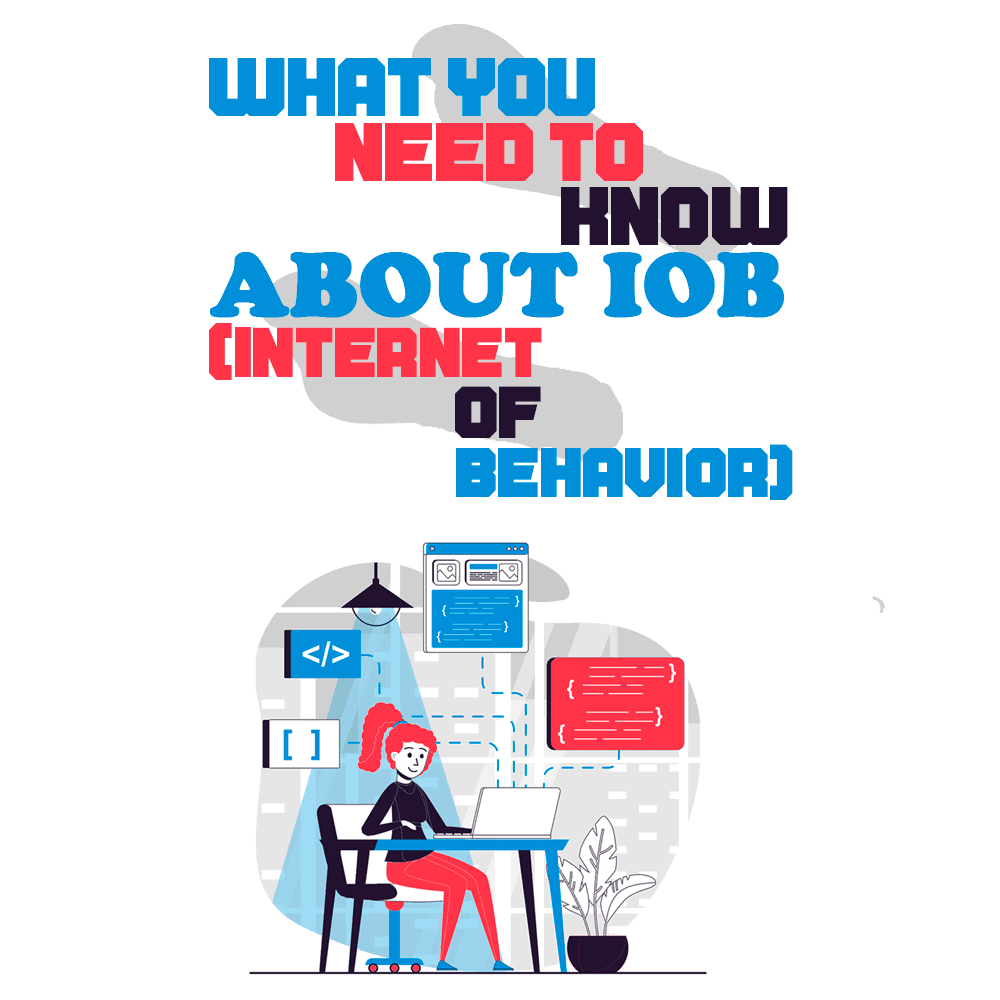 Ranked among the Top 9 Strategic Technological Trends for 2021 by Gartner, the Internet of Behavior or IoB is a subject of rising interest. An area of research and development, IoB aims to delve deeper into understanding human behavior to improve human-technology interaction.
Ranked among the Top 9 Strategic Technological Trends for 2021 by Gartner, the Internet of Behavior or IoB is a subject of rising interest. An area of research and development, IoB aims to delve deeper into understanding human behavior to improve human-technology interaction.
IoB is an extension of IoT, the Internet of Things, a technology that has become familiar to us in recent years. Basically, IoB revolves around analyzing the huge amount of data generated by IoT devices and using them to understand human behavior.
User data is fundamental and invaluable today, thus IoB has huge potential. This article will shed light on the importance of IoB, its usage in various fields, and the challenges and opportunities in the field.
What Is IoB
The term IoB was coined by Professor Göte Nyman, a psychology professor at the University of Helsinki in 2012. With an intention to bring more light to understanding human behavior, professor Nyman introduced the concept of IoB, a combination of three fields: technology, data analytics, and behavioral science.
IoB can be defined as the gathering, analyzing, and using of data to understand, predict and drive human behavior. Data is collected from IoT devices and other sources like the internet, household devices, and wearables. The data is then interpreted to understand individual behavior in the light of behavioral psychology and used to influence people’s decision-making.
According to Professor Nyman, for each behavior, an address can be assigned, similar to IoT devices. Once an address is assigned to a behavior, different types of data can be linked to it. The data could be IoT data, biometric data, social media interactions and purchasing data, to name a few. The IoB data analysis can also be integrated into a central database just like IoT devices.
Understanding the Importance of IoB
Data is invaluable, but rarely so in its raw format. When data is analyzed and transformed into knowledge, it becomes an asset. IoB has tremendous importance as it can influence the entire customer experience, from the initial stage to the final touchpoint. As IoB gives information about users from different points of contact, identifying users’ discovery points, it becomes easy to track users’ journey and analyze their actions.
What does this mean for businesses? Powerful insights to make the user touchpoints engaging and deliver personalized information! The result? More interactions and engagement. With the extensive behavior analysis and its contextual application, IoB provides excellent value to users and businesses alike. As such, companies are heavily investing in IoB to improve their fundamental relationship with users.
To sum up, IoB can benefit in several ways, such as:
- Close sales quickly with personalized marketing
- Quick resolution of user concerns owing to a better understanding of user behavior
- Eliminate time-consuming user surveys
- Get a comprehensive image of target users with data from multiple channels
- Perform real-time targeting of users for improved sales
Role of IOB in Various Sectors
As human behavior is an elementary aspect in many sectors, IoB has an impactful role to play, no matter what a given company sells or how big it is. This section will discuss the role of IoB in certain sectors but it is in no way an extensive list. The bottom line is that wherever there is human involvement, IoB has an influence.
Insurance
Insurance companies can use IoB to prevent incidents of driving under influence, identify medical emergencies, and monitor driver activities. IoB can help analyze accident scenarios accurately and identify if it was due to driver error.
Many insurance companies already use driver tracking tools. IoB can take it to the next level with its behavioral evaluation, benefitting the insurance agencies.
Digital Marketing
Digital marketing is a field where close involvement with many types of people is a necessity. As a result, IoB provides effective tools for behavioral analysis and interpretation, enhancing the end-user influence and thus improving conversion rates.
For instance, IoB can be used to analyze and optimize marketing campaigns. With IoB data, it is possible to understand people’s behavior comprehensively. Hence, personalized marketing can be done so that each person is targeted with advertisements that catch their attention.
In fact, Google and YouTube are already using IoB to show targeted ads to people. Remember how ads related to products you searched for show up during browsing Google or YouTube? Yes, that's IoB in action.
IoB can also be used to generate real-time marketing notifications which have proven to be a great sales generator. Understanding individual behavior and sending notifications at the right time highly increases the chances of conversion. To see a practical example, think of how many times you have ordered food from an app just because they sent a notification during your lunchtime!
Production
From analyzing customer behavior to employee behavior and demand for products, the role of IoB in production is multifaceted. IoB data can be used to analyze the behavior of production staff to discover new ways to improve the quality and efficiency of production.
Moreover, analyzing data about customer behavior and how they interact with products can provide useful insights to improve customer satisfaction and safety. IoB can also be used to analyze behavioral data and determine the demand for products, based on which production can be planned. This can eliminate the problems of excess or dearth of stock.
Healthcare

Tracking patient activities, gathering insights from them, and sharing them in a cohesive way with the doctors greatly aids the accuracy of diagnosis.
IoB also tremendously assists healthcare providers in continuously monitoring patient behavior and relaying real-time data. For patients with chronic illnesses or needing post-surgical care, IoB is a useful tool. Moreover, iOB can be used to track patients’ responses to treatments or the impact of medical drugs.
Government
Governments can use IoB technology to gather the collective interest of citizens and thus adjust policy making.
Moreover, IoB can be deployed to enforce law and order by tracking people or groups who threaten the secure functioning of societies, thus reducing crime rates. Though the political or judicial aspects are another matter, beyond the scope of this post, this application of IoB is certainly possible from a technological standpoint.
Challenges of IoB
Gartner predicts that by 2023, 40% of the worldwide population will be under digital tracking. IoB will be a real game-changer, and while it promises tremendous opportunities, there are some serious privacy and security concerns associated with it.
The extent to which IoT tracks sensitive personal information is unnerving to many. Most aren’t comfortable with that level of intrusion. Moreover, there are concerns regarding many companies’ practice of sharing data behind the scenes with their subsidiaries.
Three key challenges that IoB has to address are:
- Regulations: Clear regulations have to be stipulated across jurisdictions to address data privacy concerns.
- Value: If people are willing to surrender their sensitive, personal information for better experiences, the value that they receive must be well worth it.
- Security: For attackers, IoB opens up yet another attack area. Measures must be taken to eliminate data breaches and attacks.
Opportunities in the Field and Skills Needed
As the popularity of IoB technology is increasing, career opportunities in the field are also on the rise. Some in-demand jobs in the IoB field are IoB architect, IoB developer, IoB solutions engineer, and sensor architect and designer. There is also a rising demand for technicians, as a huge number of devices have to be deployed and managed.
Skills needed to venture into the IoB field include analytical skills, behavioral science, data management, sensor development, and data acquisition and management. Programming knowledge in Python, JavaScript and embedded languages is also a great skill to get started in a career in the IoB domain. People with software development and testing skills can try their hand to grab opportunities in IoB.
The Future of IoB
According to Gartner, by 2025, more than half of the global population will be interacting with at least one IoB system. Personalizing information is the key to delivering distinguishable experiences to people in the future.
With more than three billion people expected to interact with IoB technology in the next two years, its impact on improving service efficiency looks promising. By addressing the challenges it poses in the best possible way, IoB will deliver as much value to people as it will to businesses.
As Peter Sondergaard, Senior Vice President and Global Head of Research at Gartner said, “Information is the oil of the 21st century, and analytics is the combustion engine.”
